Lira Clinical and Dermal Supplies Australia & New Zealand (DSANZ) took their training to the tropics, hosting their 2023 Skin Affair event on Hayman Island. Hannah Gay joined the founders of Lira along with around 100 aestheticians and DSANZ educators to discuss the latest in ingredient education.
The Australasian beauty and aesthetics markets are booming, having grown in the millions of dollars in recent years. In New Zealand alone, the beauty and personal care market is projected to grow a further 5.76 per cent by 2028. The Australian aesthetic device market is projected to reach 1.22 billion by the same year, with an expected growth rate of over 12 per cent.
These are statistics the founders of US skincare brand Lira Clinical know all too well. The brand launched in 2010 and opted to expand into Australia just two years later. Lira has been distributed by Dermal Supplies ANZ since its inception down-under. Today, DSANZ is recognised as Lira’s #1 distributor globally.
For the fourth time, DSANZ hosted Lira’s founders for its annual Skin Affair. Each year, the highly-anticipated event welcomes DSANZ stockists from across ANZ to learn, network and celebrate their achievements. Around 100 aestheticians and salon owners attended this year’s event, which was hosted on the luscious and remote Hayman Island off the North Queensland coast.



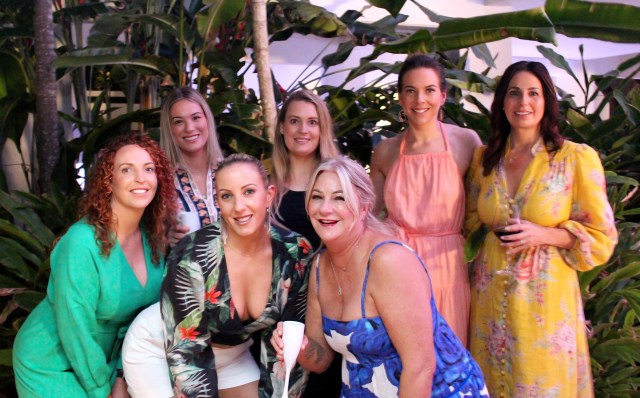

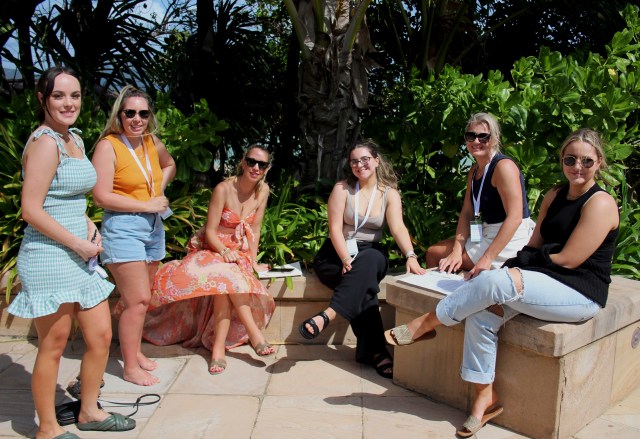
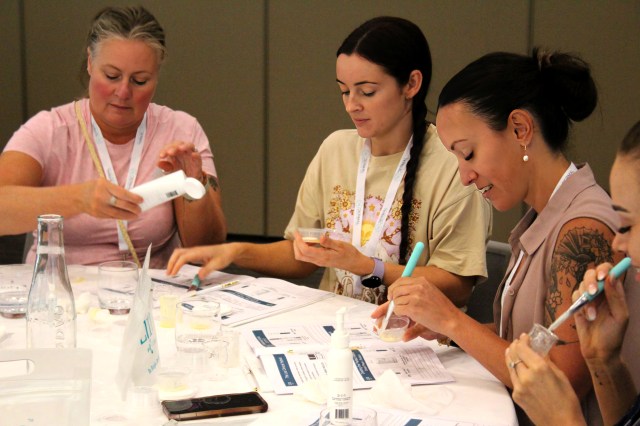
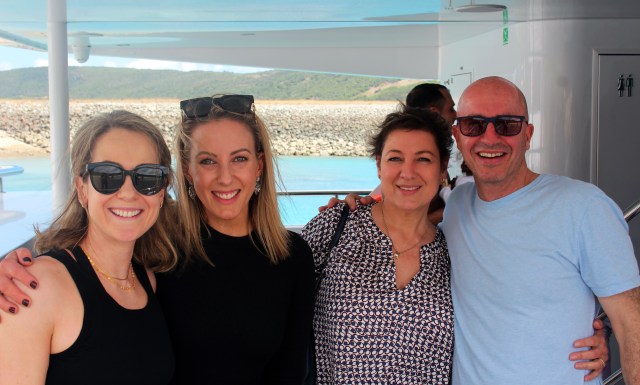
The event ran across four days and encompassed a series of talks and workshops designed to update stockists on Lira’s latest developments. DSANZ’s other professional brands – including Saint Minerals, Intrametica and TruDermal – were also showcased.
DSANZ General Manager Grant Edgley welcomed valued stockists by thanking teams for their attendance, particularly due to the ongoing industry-wide staffing crisis. Attendees were split into three groups to make for more intimate training sessions.
Lira Clinical ingredient and product trends
Two words are synonymous with Lira Clinical: Clinical Skincare – defined as the understanding and application of specific products and professional guided modalities with the intention of re-establishing proper function, cellular health and skin vitality.
The goal for aestheticians is to consider skin care as a system; a routine. Lira’s formulas utilise clean ingredients to manage the health of the skin. And while the potency of actives is important, it’s the manner in which those actives are delivered that Lira’s Francine Kagarakis opted to discuss.
“We have to show results, because then we get people coming back. If it doesn’t change their skin, they aren’t coming back,” Francine emphasised. Despite traditional belief, she argued, what is done to the epidermis can impact the health of the dermis.
Lira works with peptides, from signaling peptides through to reparative peptides, across their range. “Peptides are transistors – they tell computers what to do.” Francine said. “Peptides signal the skin to do certain things. They turn things on-and-off.”
When it comes to ingredients, Lira’s hero is Mastiha, found in Chios, Greece. The ingredient has a long history of medicinal use and has been used in Ayurveda for thousands of years. Chios Mastiha works to reduce inflammation, as an antioxidant, and for wound healing. In 2013, Lira introduced their MYSTIQ line heroing the ingredient, which has found a firm place in the Australasian market due to our exposure to the sun.
Also discussed was melanin management which for Lira aestheticians shouldn’t just be limited to those with pigmentation, but for all skins. “Knowing what type of melanin you’re dealing with is important,” Francine said. Melanin disruption commences at the interruption of Melanocyte Inducing Transcription Factor (MITF) communication and can be treated in multiple ways. The inclusion of Oligopeptide-51 in Lira’s BIO Caviar Creme, for example, is designed to interrupt MITF Communication from the get-go.
Rethinking chemical peels
Like melanin management, Lira advises aestheticians to challenge the way they (and their clients) think about chemical peeling. Like smartphones, peels have come a long way in the last two decades, Lira’s Metaxia Dalikas argued. She vouched for peels as maintenance tools, not just those for correction.
Aestheticians were reminded that there is no such thing as a medical-only peel and that “there is no peel in the market that Lira doesn’t have,” Metaxia said. To reduce downtime, the brand encourages a hybrid peel model and leaning on the judgment of the skin professional in determining what ingredients to combine.

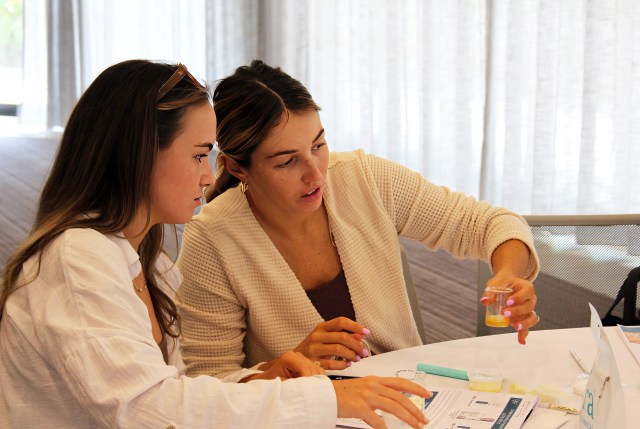
Lira’s hybrid peels can be used on all clients with or without peel experience. The strongest peel is not necessarily the best out there, Metaxia said, suggesting this idea is outdated. 12 months ago, the brand introduced its line of versatile Smart Peels. Metaxia explained that Smart Peels are different to regular peels because they are designed to plump and volumise the skin, and can be combined with Lira products for added control. The glycolic in Lira’s Hydroxy 30, for example, can assist with ingredient penetration when combined with the Bio Hydra C Serum.
Jen Dixon is the owner of Sydney-based salon, Embellish Inc. and Lira stockist of six years. She told Professional Beauty of her excitement to be “levelling up” with Smart Peels, taking treatments to “level two – using two different types of acids in one skin treatment.” Jen expects the potential results will be “next level”.
“[Using hybrid peels] will encourage [clients] to get back into the full range, particularly after COVID where clients dropped off. We’re at the time of year where we need to pull back on doing advanced treatments, so will go back to buffering, combining up to three modalities. That’s what I love about Lira – even their buffered treatments give such a beautiful response in the skin… extreme correction with no downtime.”
Lira Clinical and devices
“Twenty years ago, we didn’t respect the stratum corneum. Now we do,” Lira’s Brenda Cumming shared. “You’re not doing medical aesthetics a service when you let your client walk out the door with injections but without skincare.”
Brenda sought to debunk old-age ideas around modality use, insisting that hypopigmentation simply cannot be fixed. When dealing with Fitzpatrick’s types 4, 5 and 6 in particular, Lira recommends longer-term preparatory home care use prior to an intensive treatment.
Brenda also argued that laser devices cannot effectively treat melasma, and that the best solution for pigmentation using a device is microneedling the skin. The Lira Green Power peel works in a similar fashion to needling, she explained, working to relieve acne scarring, as the peel allows the aesthetician to control the depth of ingredient penetration. Green Power can also be combined with other peel ingredients for additional skin benefits at any one time.
The future of Clinical Skincare
Aestheticians will note that one of the first things clients will ask when stepping foot into their businesses is “what’s new?” Keeping abreast of the latest science and beauty trends can therefore be of great benefit to teams and their clients alike.
Lira Clinical is investing in the following ingredients:
- Sea Fennel as a natural retinol alternative
- Shifting away from plant stem cells and toward plant exosomes
- Utilising lipid soluble vitamin C, as it penetrates the lipid barrier
- Stabalising vitamin C in glucose
- Anhydrous formulations, ie. waterless, preservative-free products, such as in the new Lira Clinical SPF EliōDrops 30.
To stock Lira Clinical at your salon or clinic, contact DSANZ on 1300 663 683 or visit the Lira Clinical website.
Read the current issue of our digital magazine here:
- For more news and updates, subscribe to our weekly newsletter
- Follow us on Instagram
- Like us on Facebook
- Join Australia’s largest network of beauty industry professionals on LinkedIn
- Subscribe to our print magazine
Have an idea for a story or want to see a topic covered on our site and in our pages? Get in touch at info@professionalbeauty.com.au.

